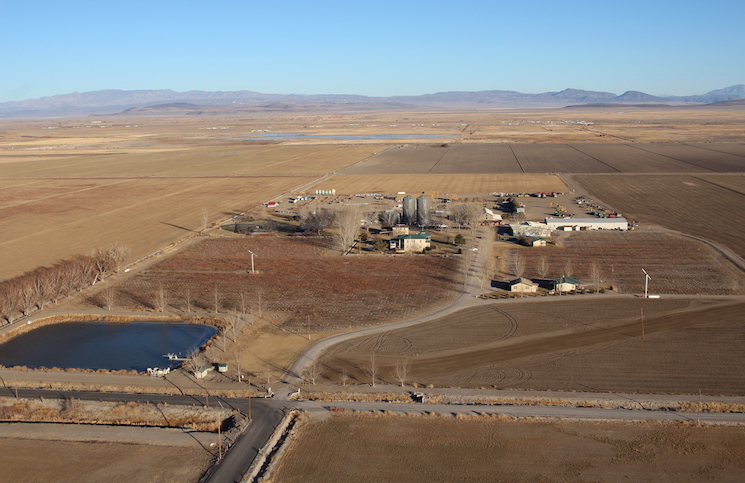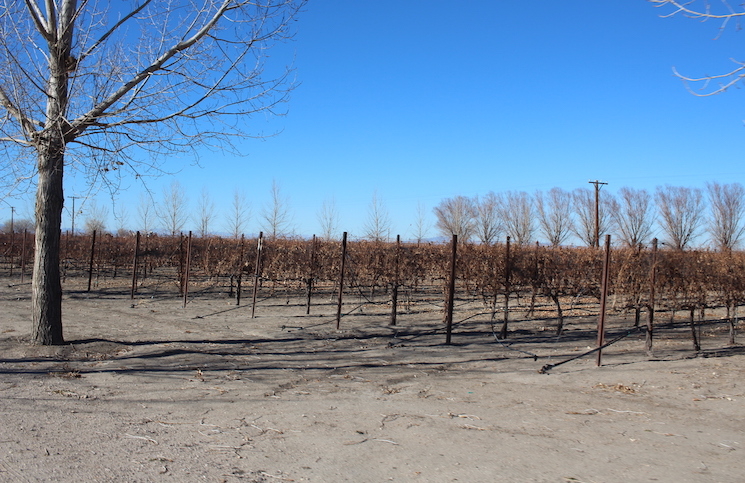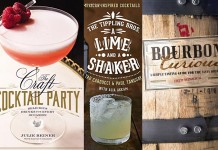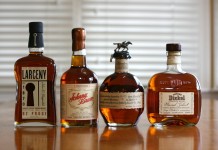
Before Prohibition, it would be commonplace to see a still on a farm in America. A significant number of early American farmers were immigrants, and many of them (including, most notably, the ones from Ireland and Germany) brought along the tradition of distillation. The farmhouse still used to be a very important piece of farm equipment, just as important as the plow or silo. Stills enabled farmers to preserve a part of their crop for sale during the winter months. This grain spirit wouldn’t spoil, got better the longer it was stored, and often fetched a higher price than the grain itself.
Prohibition just about wiped out the farmhouse still, and now it’s rare to see a still at any farm in America. This is part of what makes the Frey Ranch Distillery so important. Located about 45 minutes outside of Reno, Nevada, right outside a little town called Fallon in Churchill County, Frey Ranch Distillery is first and foremost a farm. Colby Frey, 31, along with his wife, Ashley Frey, 29, oversee over 2,500 acres of farmland at Frey Ranch.
The Freys are fifth generation Nevada farmers, dating back to the 1850s with the first deeded property in Nevada (still referred to by the state as Ranch 1). The Frey Family come from extremely modest roots – Colby’s grandfather, the original owner of Frey Ranch, literally lived in a dirt dugout.

This dugout was located on land given to Colby’s grandfather. The land was nearly valueless and considered un-farmable because it was densely packed with large trees. Inventiveness is something that clearly runs in the Frey family, and Colby’s grandfather designed and built a stump puller from the scrap material he had on hand. He then cleared the land by hand, one tree at a time, and sold it to get the funds to buy the land where the Frey Ranch is today.
When the time came for Coldby’s grandfather to retire, he sold the farm to his son, Charlie Frey. Following the family tradition, when Charlie Frey was ready to retire, he sold it to Colby. “There’s no way we could do what we do on this land if we didn’t own it. The mortgage alone would be much more than anything we could produce on it,” remarks Colby.

As a farm, Frey Ranch is impressive. Spanning 2,500 acres of both owned and leased land, the farm extends almost as far as the eye can see. Initially focused on producing cattle feed, Frey Ranch grows corn, wheat, rye, barley, and alfalfa – the first four being crops that just happen to be the key grains in whiskey.
In 2001, the Freys added grapes to their crops, augmenting the vines which historically grow around the farm’s main house. In 2004, the Freys began to produce wine and bottle it under the brand Churchill Vineyards. “There was already a Frey wine on the market, although they pronounce it ‘fry’, so we didn’t want any confusion,” explains Colby.

Their wine was a hit, especially in the local area. Between the bountiful number of white grapes grown on the property, and the red grapes brought in from Sonoma, the Freys found themselves with a surplus of wine. The Freys looked at the possibility of distilling those wines into brandy, but in 2006, it was still illegal to distill in Nevada. “We lobbied the legislature to change the laws so we could get an experimental distilling license. This meant we could distill, but couldn’t sell,” says Colby.
Their efforts were successful, and in 2006 the Freys began to make brandy, the first legally distilled spirit in Nevada since Prohibition. In 2011, the Freys decided it was time to take things to the next level, so again they lobbied the Nevada legislature and helped pass a craft distilling bill. They were successful, and in September 2014, the first spirits rolled off the Frey Ranch Distillery still.

For a craft distillery, Frey Ranch Distillery is incredibly impressive. Built in the former location of the farm’s horse corral, and using a great deal its reclaimed wood, the distillery spans 4,700 square feet. At the heart of the distillery is a Vendome still, which is a trifecta of a 500 gallon pot still, a vodka column, and a 24-foot continuous still. To feed that, Frey Ranch Distillery has four 5,000 gallon fermenters, one 5,000 gallon mash cooker, and one 5,000 gallon beer well. “We oversized the distillery so we could run it all winter, then shut it down during the summer and focus on farming,” explains Colby.

As with almost everything that the Freys do, they completed the design, configuration, and installation of the distillery themselves. “We wanted to plumb our steam lines under the floor, and when we called the plumbers to ask how exactly to do this, they said we can’t. After explaining how we figured we could, they realized we were on to something,” remarks Colby.
After going through the painstaking task of floor malting their first batch of whiskey, Colby worked with a local welder and machinist to help design their own malthouse. “We’re using the same tools we do to weigh grain. You can figure out the humidity better in a malting drum by how much it weighs, and this is more accurate than taking the reading at one end of the malter, which may be different than another end.”

As impressive as the distillery is, the real star of the Frey Ranch Distillery is the grain. With deep experience growing barley, corn, rye, and wheat, the Freys shifted their focus from feeding cattle to making vodka and whiskey. “We grow wheat, rye, barley, and corn, so it made sense to make our whiskey from what we grow.” Both Frey Ranch Vodka (currently on the market), and the future Frey Ranch Bourbon Whiskey are made from the same mash bill: 66.6% corn, 11.4% rye, 10% wheat, and 12% barley. “We actually baked a bunch of bread, and the one we liked the best, we used as our mash bill.”

While the Frey Ranch Distillery Whiskey probably won’t be on the market for a few years, Frey Ranch Vodka is a sneak peek of what’s to come. Frey Ranch Vodka can easily be classified as a premium craft vodka; instead of being neutral, it showcases the four grain blend from the mash bill. From the wheat there’s a wonderful vanilla creaminess, from the corn there’s an underlining sweetness, the barley gives it beautiful cereal grain flavors, and the rye adds some spice. The entire taste experience of Frey Ranch Vodka is soft and round, full of soft grain flavor, solid structure, and a nice clean finish.
We had an opportunity to taste some of the spirit coming off the Frey Ranch still that’s destined to become Frey Ranch Whiskey and it has extraordinary promise. Like the vodka, the whiskey showcases the four grains from the mash bill, but here they are the full and complete expression. We’ve never tried a white whiskey that had a better and clearer expression of the grain.

That’s what it all comes down to. First and foremost, the Freys are grain farmers. They’ve made their living for generations growing, harvesting, processing, and selling these grains. They understand the entire equation, from the best way to fertilize their crops, to which varieties grow best, and when to harvest them. “The saying in the vineyard is, you can’t make good wine out of bad grapes. It’s the same thing with the grains you make into distilled spirits. We have total control, we can sacrifice quantity for quality, and that’s what we do very often, and it’ll show in the end product. Having total control from planting the grains, the types and varieties, the way it’s grown, the fertilizers, the pesticides, all that stuff really adds up and shows in the final product.”
The Freys aren’t just a new and important voice in the craft distilling movement, they represent the resurrection of one of the essential elements of small American farming: the farmhouse still. If more farms follow suit, it could create an interesting and vibrant segment of the craft distilling movement and a range of spirits that are grown, harvested, fermented, distilled, bottled, and sold all in the same place.
Watch our video From Grain To Glass: Behind The Scenes of the Frey Ranch Distillery:
















